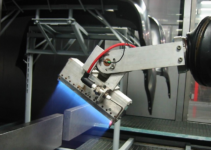In today’s rapidly changing business landscape, organizations are constantly seeking innovative ways to optimize outcomes and drive success.
Prescriptive design has emerged as a powerful approach to crafting solutions that are tailored to specific goals and objectives. By understanding the key principles and applying them effectively, businesses can unlock their full potential and achieve optimal outcomes.
This article explores the evolution of prescriptive design, delves into its core principles, showcases successful case studies, and discusses future trends and opportunities in this dynamic field.
The Evolution of Prescriptive Design

Source: cio.com
The evolution of prescriptive design has been a gradual process marked by significant advancements and innovations in the field. It has its historical origins in the early 20th century, when industrial designers began to incorporate user-centered approaches into their work.
Over time, this approach has evolved to encompass a broader range of disciplines, including architecture, software development, and product design. The impact of prescriptive design on user experience cannot be overstated. By considering the specific needs and preferences of users, designers are able to create solutions that are tailored to their individual requirements.
This leads to improved usability, increased satisfaction, and enhanced overall user experience. The evolution of prescriptive design has transformed the way we approach design, placing the user at the center of the process and ensuring optimal outcomes.
Understanding the Key Principles
Prescriptive design, with its historical origins in the early 20th century, encompasses a set of key principles that guide designers in crafting solutions for optimal outcomes. These key principles serve as a foundation for the implementation techniques used by designers.
The first key principle is understanding the problem at hand. Designers must thoroughly analyze the context, constraints, and objectives to develop a comprehensive understanding of the problem.
The second principle is the identification of multiple potential solutions. Designers should generate a range of ideas and possibilities, encouraging creativity and innovation.
The third principle is the evaluation and selection of the most appropriate solution. Designers must critically assess the potential outcomes and select the solution that best aligns with the problem and objectives.
Finally, the fourth principle is the implementation and testing of the chosen solution. Designers need to ensure that their solution is practical, feasible, and effective by conducting rigorous testing and refining as necessary.
Applying Prescriptive Design in Business

Source: legalzoom.com
Applying the principles of prescriptive design to business practices allows organizations to craft solutions that yield optimal outcomes. In today’s data-driven world, businesses have access to vast amounts of data that can provide valuable insights.
By leveraging data analysis techniques, businesses can make informed decisions and identify patterns and trends that may not be apparent through traditional methods. Prescriptive design can be applied to various aspects of business, such as supply chain management, marketing campaigns, and customer service.
By analyzing data and using prescriptive design methodologies, organizations can optimize their decision-making processes, identify potential risks, and uncover new opportunities. This approach can lead to improved efficiency, increased profitability, and a competitive advantage in the market.
Case Studies of Successful Implementation
Successful implementation of prescriptive design methodologies in business practices has yielded significant improvements in decision-making processes, efficiency, and profitability.
Case studies provide concrete evidence of how these methodologies have been successfully implemented and the positive outcomes they have generated.
One such case study is the implementation of prescriptive design in a manufacturing company. By analyzing historical data and using advanced analytics, the company was able to optimize its production processes and reduce waste, resulting in a 20% increase in overall efficiency and a 15% decrease in production costs.
Another case study involves a retail company that used prescriptive design to optimize its pricing strategy. By considering various factors such as demand, competition, and customer behavior, the company was able to set optimal prices for its products, leading to a 10% increase in sales revenue and a 5% increase in profit margin.
These case studies highlight the success of implementing prescriptive design methodologies in improving business outcomes.
Future Trends and Opportunities in Prescriptive Design

Source: vecteezy.com
Looking ahead, the field of prescriptive design is poised to witness emerging trends and opportunities that can further enhance decision-making processes and drive business success. Technological advancements play a crucial role in shaping the future of prescriptive design.
As technology continues to evolve, prescriptive design solutions will become more sophisticated and efficient, enabling businesses to make data-driven decisions with greater accuracy and speed.
Furthermore, ethical considerations will take center stage in the development and implementation of prescriptive design methodologies. As the potential for data misuse and algorithmic biases increases, it is essential for organizations to prioritize ethical practices and ensure transparency in their decision-making processes.
Frequently Asked Questions

Source: searchenginejournal.com
What Are the Potential Limitations of Prescriptive Design in Solving Complex Problems?
Limitations and challenges of prescriptive design in solving complex problems include the potential lack of flexibility, the reliance on predefined solutions, the inability to account for unique contexts, and the risk of overlooking innovative and creative approaches.
How Does Prescriptive Design Differ From Other Problem-Solving Approaches?
Prescriptive design is a problem-solving approach that distinguishes itself from other methods by providing specific recommendations for achieving optimal outcomes. It offers a structured and systematic framework for crafting solutions, ensuring efficiency and effectiveness in addressing complex problems.
Are There Any Ethical Considerations When Implementing Prescriptive Design in Business?
When implementing prescriptive design in business, there are ethical considerations that need to be taken into account. These considerations include issues related to privacy, data security, fairness, and the potential for unintended consequences. Implementation challenges may also arise, such as resistance to change and the need for clear communication and stakeholder involvement.
What Are Some Common Challenges Faced When Applying Prescriptive Design in Real-World Scenarios?
When applying prescriptive design in real-world scenarios, challenges may arise such as limited data availability, resistance to change, and the complexity of the problem at hand. These challenges can hinder the successful implementation of optimal solutions.
How Can Businesses Measure the Success and Effectiveness of Prescriptive Design Solutions?
Measuring the impact and determining the effectiveness of prescriptive design solutions in business can be achieved through various metrics and evaluation methods. These allow for a comprehensive analysis of the outcomes and success of the implemented solutions.



